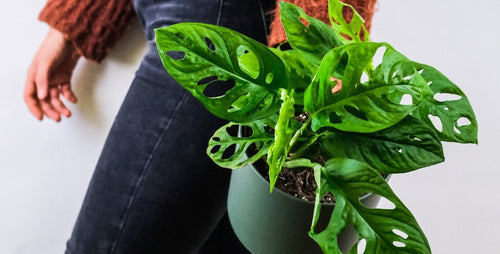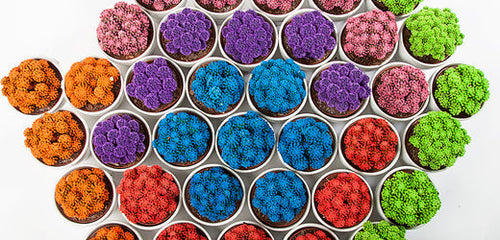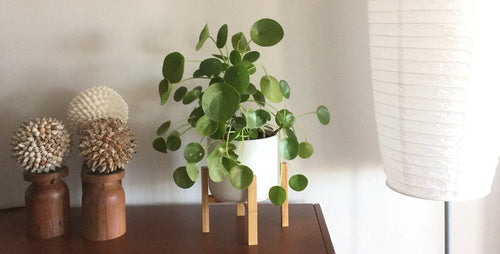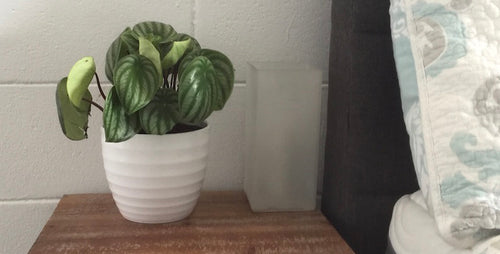By Justin Hancock
Trek deep in the tropical jungles of Asia (especially Southeast Asia) and you’ll find a delightful plant called Chinese evergreen (Aglaonema). You probably wouldn’t think these rainforest inhabitants would be some of the toughest, most reliable, easiest houseplants around, but they really are. Chinese evergreens have been a staple houseplant since the 1960s because of their good looks and no-fuss nature.
Chinese evergreens truly are fantastic houseplants: They tolerate low light like a champ (but do best in medium light); they don’t mind the desert-dry low humidity found in many homes over the winter; and you miss watering them from time to time and they hardly seem to notice. Plus, the silver variegation on their leaves adds some pizzazz.
Now we know what you might be thinking: “green plants are great and all, but I like plants that stand out.” And as much as we here at Costa Farms love Chinese evergreens, we’ve always wanted them to have a little more color.
The Next Generation
Happily, Mike Rimland, our resident plant hunter, presented us with just the thing we were looking for. You see, Mike travels all over the world scoping out potential new houseplants for Costa Farms to grow. He regularly goes to Southeast Asia, where he works with plant breeders and visits all kinds of plant nurseries. (Seriously – you should see his frequent flyer miles account!)
And it was in Southeast Asia that Mike found red aglaonemas.These plants have us excited the way few other plants have! Red aglaonemas offer you all the great traits of their old-fashioned cousins, but now bring in bold dashes of red and pink. We’re growing five of the best: 'Anyamanee', 'Pink Dalmaton', 'Red Emerald,' ‘Siam Aurora’, and ‘White Calcite’.
Testing
In picking those five varieties, Mike has looked at more than 200 different and exciting selections. Curious how he narrowed it down to the five? The first step is being able to import them here to the United States. Then we trial them for more than a year to make sure we here at Costa Farms can grow them successfully. After all, it doesn’t make sense for us to produce plant varieties we can’t grow well.
Those red aglaonemas that pass the first set of trials are then tested to see how they do in both average and challenging conditions of homes and offices. Each variety has its own personality, and if it shows any characteristics that make us think it won’t do well for you, we chuck it. And while we have five varieties now, there’s more to come as new varieties make it through the rigorous testing process.

Making More Plants
The varieties that earn a thumb’s up through both sets of trials then go to propagation. That means our growers take cuttings to be able to grow more of them. We take cuttings by hand, ensuring we’re starting new plants of the very best quality. This process takes a long time -- a year or more so we can start to build up enough stock to provide the plants to our retailers throughout Canada, the United States, Puerto Rico, the Dominican Republic, and other locations.
From the time we take the cutting, it can take more than a year before it grows into a plant we think looks good enough to ship to your home. Over the course of the year, our team of growers do pretty much everything by hand to ensure we’re giving you happy, healthy plants.

Decorating with Red Aglaonema
You can grow red aglaonemas, among the easiest houseplants, in pretty much any room of your home. Plants in smaller pots are fun tabletop centerpieces, especially for the holidays where you can make the most of their red coloring. (A red aglaonema in a silver pot is a classic look!) They also pair brilliantly with white-variegated plants such as English ivy or creeping ficus. And unlike poinsettias, red aglaonemas keep their color all year (plus, they’re a lot easier to grow).
Larger pots are perfect for side tables in your home or even as floor plants next to a sofa or end table. Place them in front of a railing in a loft to soften the look of the spindles and add a burst of color. Or, add them to the bathroom -- if it has windows -- for a little natural color (you’ll find your red aglaonema loves the extra humidity!).
Learn more!


















